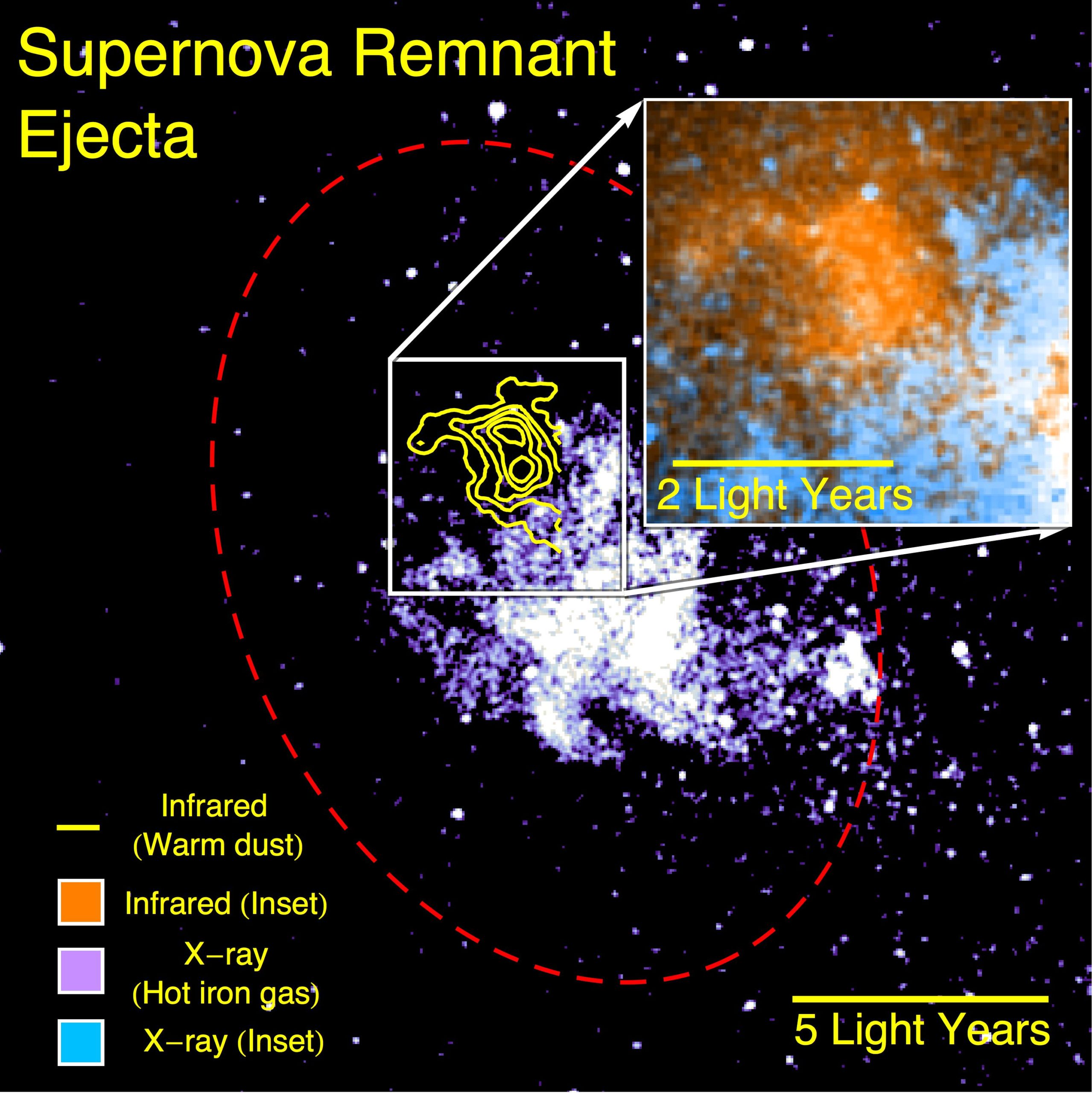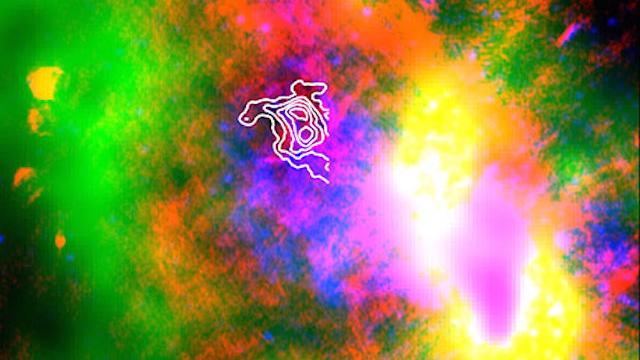Exploding stars are always a sight to behold, but not all supernovae are created equal: Some, for instance, may give birth to thousands of Earth-like worlds.
Shown above is a false-colour image of the interstellar dust cloud Sagittarius A East, located 26,000 light nears away toward our Galactic center. It’s the remains an core-collapse supernova that took place 10,000 years ago, one that spewed forth enough dust to create up to 7000 Earth-like planets, according to the astronomers who pieced it together. Whoa.
This rare glimpse of an exploded star’s entrails was captured using NASA’s Stratospheric Observatory for Infrared Astronomy (SOFIA), the world’s largest airborne astronomical observatory, which basically consists of a massive telescope strapped to a modified Boeing 747. Remnant dust from the supernova (shown above in white contour lines), was mapped based on infrared emissions, or heat signatures left over from the ancient explosion.

Image: NASA/CXO/Lau et al. 2015. Red lines indicate extent of supernova shockwave.
What’s significant and new here is how we can see stardust escaping the scene of the crime, seeping out into space where it will provide the raw materials for new celestial bodies to coalesce. According to NASA:
Astronomers already had evidence that a supernova’s outward-moving shock wave can produce significant amounts of dust. Until now, a key question was whether the new soot- and sand-like dust particles would survive the subsequent inward “rebound” shock wave generated when the first, outward-moving shock wave collides with surrounding interstellar gas and dust.
“The dust survived the later onslaught of shock waves from the supernova explosion, and is now flowing into the interstellar medium where it can become part of the ‘seed material’ for new stars and planets,” Lau explained.
The findings also offer strong evidence that the “dustiness” of young, distant galaxies may be the result of supernovae — a hypothesis that until now lacked observational support.
The notion that we’re all just stardust may be almost cliche at this point, but still, it’s remarkable that we now have the technology to see the evidence strewn all over the cosmos.
Image: NASA/Cornell
Read the full scientific paper at Science.
